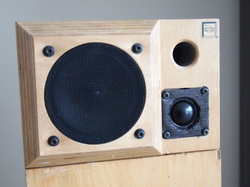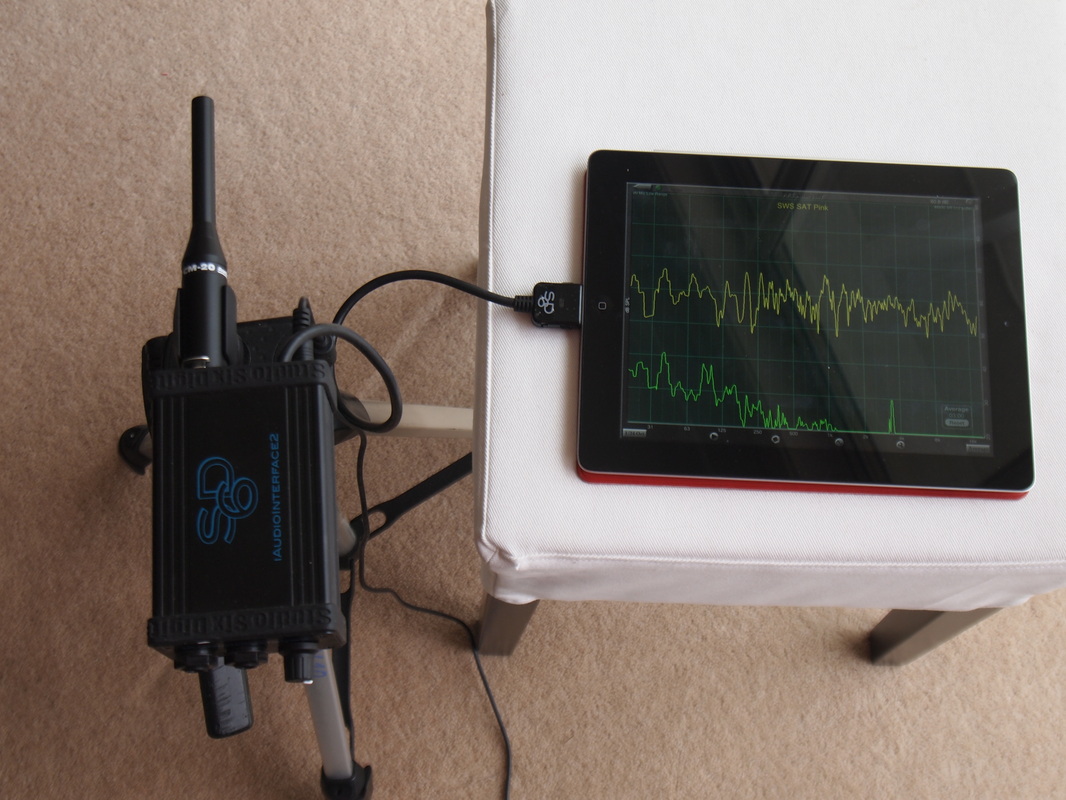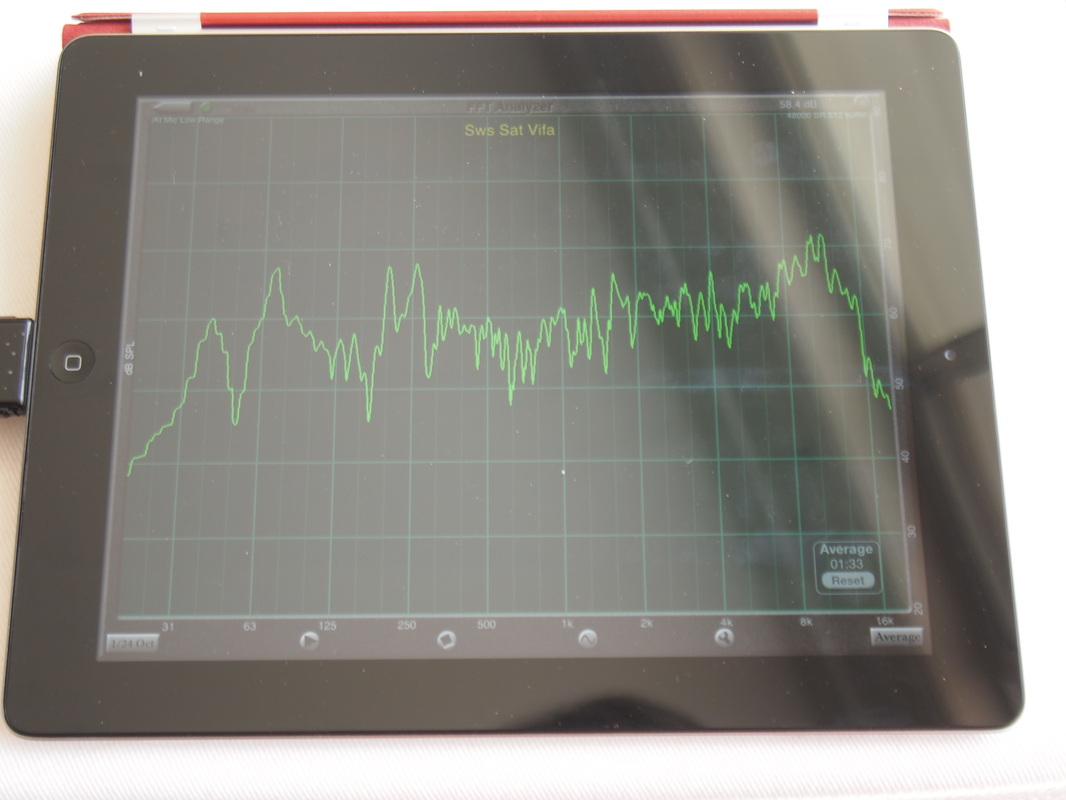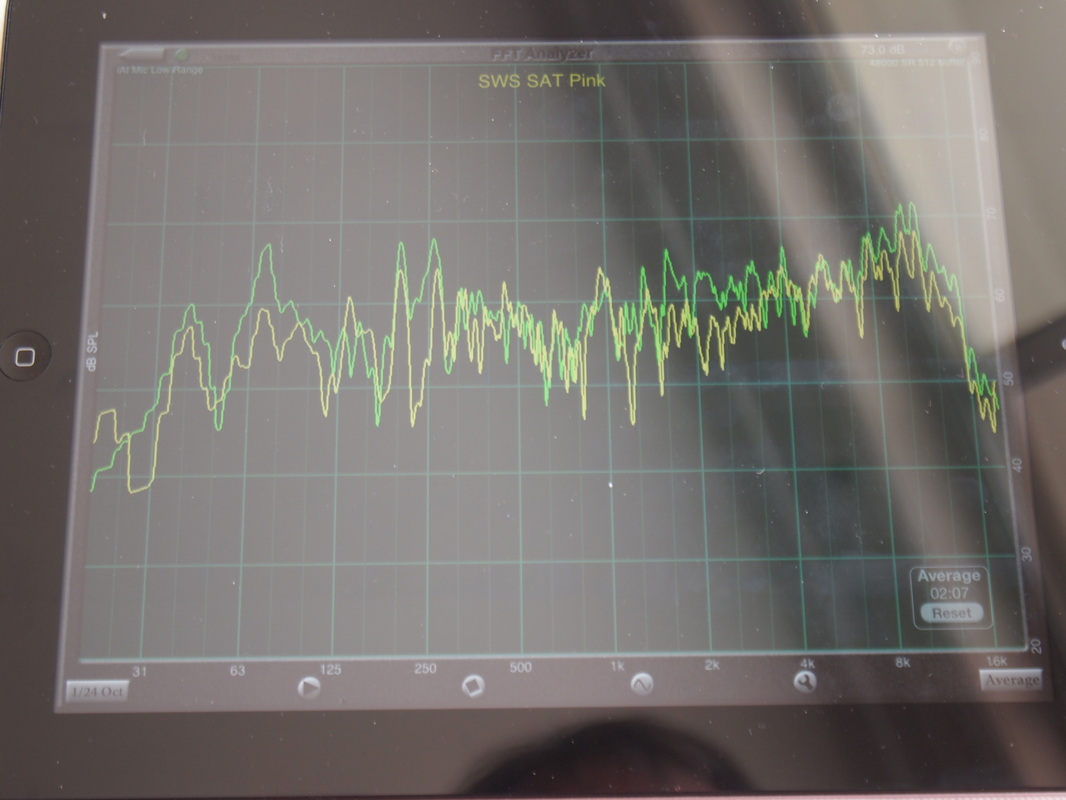
Microphase SAT Mark II, December 2012
I have not felt the need to upgrade these speakers since their conception 30 years ago. One reason being that I could not find any better driver(s) that would be easy to retrofit mechanically and that would actually provide better results.
Over the last three months though, I had to research new drivers for another entirely new design for which I have been commissioned (and paid...). This new design is based on BMR drivers and at first I was going to reuse the same tweeter from Audax,without a flange for size reasons, the TW10. But my client insisted on a better tweeter to be matched with a 4.5inch BMR, and as I furiously searched the Net for what would be still a smallish tweeter, I came across two flangeless tweeters from VIFA (now made in China by Tymphany) one 1" and one 3/4". I will keep the 3/4" one for the new speaker, but decided to try the 1" as a replacement for the TW51 originally used on the SAT.
Before I reveal to you what improvement (if any...) occured in the process, let me walk you through my newly acquired measurement system:
Over the last three months though, I had to research new drivers for another entirely new design for which I have been commissioned (and paid...). This new design is based on BMR drivers and at first I was going to reuse the same tweeter from Audax,without a flange for size reasons, the TW10. But my client insisted on a better tweeter to be matched with a 4.5inch BMR, and as I furiously searched the Net for what would be still a smallish tweeter, I came across two flangeless tweeters from VIFA (now made in China by Tymphany) one 1" and one 3/4". I will keep the 3/4" one for the new speaker, but decided to try the 1" as a replacement for the TW51 originally used on the SAT.
Before I reveal to you what improvement (if any...) occured in the process, let me walk you through my newly acquired measurement system:
If you already have an iPad and iOS6, then it will cost you about 700$ between the hardware and the various software modules you pick from quite a vast selection of measuring methods and analysis tools.
It is no HP3582 that we originally used, and certainly not the new Rohde & Schwartz UPV either that I would love to use, but it does a very good job for the price, as it is not only an FFT analyser, oscilloscope , poet meter but also a source in one little package.
You can see on the screen a recalled trace of a measurement using pink noise, a fairly flat response for an in-room measurement (top trace). The bottom trace is the residual street noise (windows open as it is summer here...) and the little spike on the right is the noise from an aircraft on its way to land at Sydney Airport...
Now going back to our listening tests, I need to say that some of the improvements are due to our freshly improved Bryston 3B amplifier, namely the stability and extension of the bass register, and general lowering on the distortion. The drivers are all tightly controlled from the bottom up to the new tweeter.
The silk dome adds extra "silkiness" for sure and also fills up a little dip in the 4 to 5 kHz region, improving timbres for violins and percussions in particular, due to a wider frequency range (up to 30kHz, according from measurements from Tymphany) and opening up the whole soundstage. However, the tweeter being bigger, it affects the directivity and the imaging to a certain extent. I had to adjust the toe-in to compensate.
Below, same measurement with new tweeter, and the two curves together on the same screen.
Our ears are obviously much better at picking details than a microphone...
BTW, I have not done anything to the filter, and probably won't. Your comments and suggestions are most welcome!
It is no HP3582 that we originally used, and certainly not the new Rohde & Schwartz UPV either that I would love to use, but it does a very good job for the price, as it is not only an FFT analyser, oscilloscope , poet meter but also a source in one little package.
You can see on the screen a recalled trace of a measurement using pink noise, a fairly flat response for an in-room measurement (top trace). The bottom trace is the residual street noise (windows open as it is summer here...) and the little spike on the right is the noise from an aircraft on its way to land at Sydney Airport...
Now going back to our listening tests, I need to say that some of the improvements are due to our freshly improved Bryston 3B amplifier, namely the stability and extension of the bass register, and general lowering on the distortion. The drivers are all tightly controlled from the bottom up to the new tweeter.
The silk dome adds extra "silkiness" for sure and also fills up a little dip in the 4 to 5 kHz region, improving timbres for violins and percussions in particular, due to a wider frequency range (up to 30kHz, according from measurements from Tymphany) and opening up the whole soundstage. However, the tweeter being bigger, it affects the directivity and the imaging to a certain extent. I had to adjust the toe-in to compensate.
Below, same measurement with new tweeter, and the two curves together on the same screen.
Our ears are obviously much better at picking details than a microphone...
BTW, I have not done anything to the filter, and probably won't. Your comments and suggestions are most welcome!



